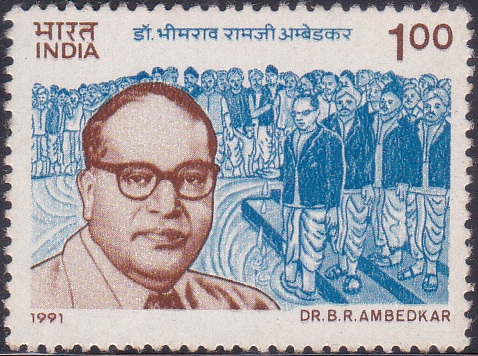
Dr. B.R. Ambedkar 1991
A commemorative postage stamp on the Birth Centenary of Babasaheb Ambedkar, architect of the Constitution of India :
Issued on Apr 14, 1991
Issued for : The Deptt. of Posts feels privileged to issue a commemorative stamp to cherish his memory.
Description of Design : The commemorative stamp is based on the art work provided by Aks India Limited. First Day Cover is designed by Sh. Sankha Samanta. Cancellation is by Nenu Gupta. The stamp depicts the portrait of Dr. B.R. Ambedkar and his leading the satyagraha for liberation of Chowdar Tank.
Type : Stamp, Mint Condition
Colour : Two Colour
Denomination : 100 Paise
Overall size : 3.91 x 2.90 cms.
Printing size : 3.55 x 2.54 cms.
Perforation : 13 x 13
Paper : Indigenous Un W/M Adhesive Gravure Coated Stamp Paper
Number Printed : 6,00,000
Number per issue sheet : 35
Printing Process : Photogravure
Printed : India Security Press
Name : Bhimrao Ramji Ambedkar [popularly known as Babasaheb]
Born on Apr 14, 1891 at Mhow, Central Provinces, British India [now in Madhya Pradesh, India]
Died on Dec 6, 1956 at Delhi, India
About :
- Dr. Bhimrao Ramji Ambedkar, the chief architect of Indian Constitution and Champion of Human Rights was born on 14th April, 1891 in a family belonging to the untouchable Mahar Community in Maharashtra. After graduating from Elphinstone College Bombay in 1912, he did his higher studies at Columbia University, USA where he was awarded Ph.D. Later, he joined the London School of Economics and Political Science and obtained the degree of D.Sc. (Eco) and was also called to the bar from Gray’s Inn.
- On return to India in 1923, he founded the “Bahishkrit Hitakarini Sabha” with the main objective of spreading education and improving economic conditions of the “Depressed Classes”. With the slogan of “Educate, Agitate and Organise”, the social movement led by Dr. Ambedkar aimed at annihilation of caste and the reconstruction of Indian Society on the basis of equality of human beings.
- In 1927, he led the Mahad march at the Chowdar Tank in Colaba, near Bombay to establish the right of the untouchables to take water from the public tank. This marked the beginning of the anti-caste and anti-priest movement. The temple entry movement launched by Dr. Ambedkar in 1930, at the Kalaram Temple, Nasik is another landmark in the struggle for human rights and social justice. Dr. Ambedkar held that “political power cannot be a panacea for the ills of the depressed classes. Their salvation lies in their social elevation.”
- As Labour Member of the Viceroy’s Executive Council from July 1942 he was instrumental in bringing about several legislative measures for protecting the rights of the workers.
- One of the greatest contributions of Dr. Ambedkar was in respect of Fundamental Rights and Directive Principles of State Policy enshrined in the Constitution. The Fundamental Rights provide for freedom, equality, abolition of untouchability and remedies for the enforcement of rights. The Directive Principles enshrine the broad guiding principles for securing fair distribution of wealth and better living conditions.
- On 14th October, 1956 Baba Saheb Ambedkar embraced Buddhism. He continued the crusade for social revolution till the end of his life on 6th December, 1956. He was honoured with the highest national honour, “Bharat Ratna” in April 1990.
- Text : Courtesy Ministry of Welfare.



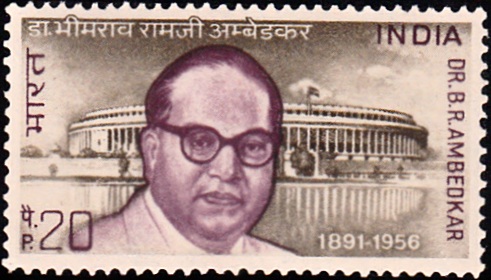
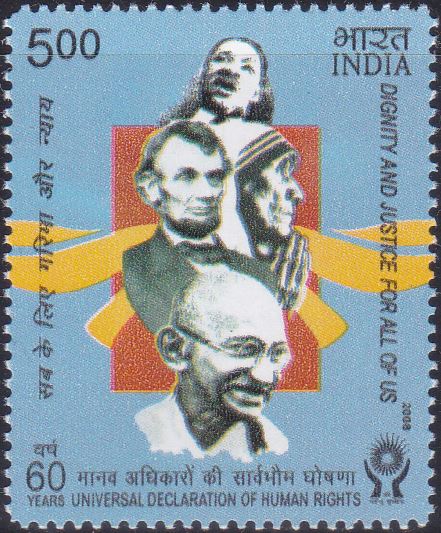
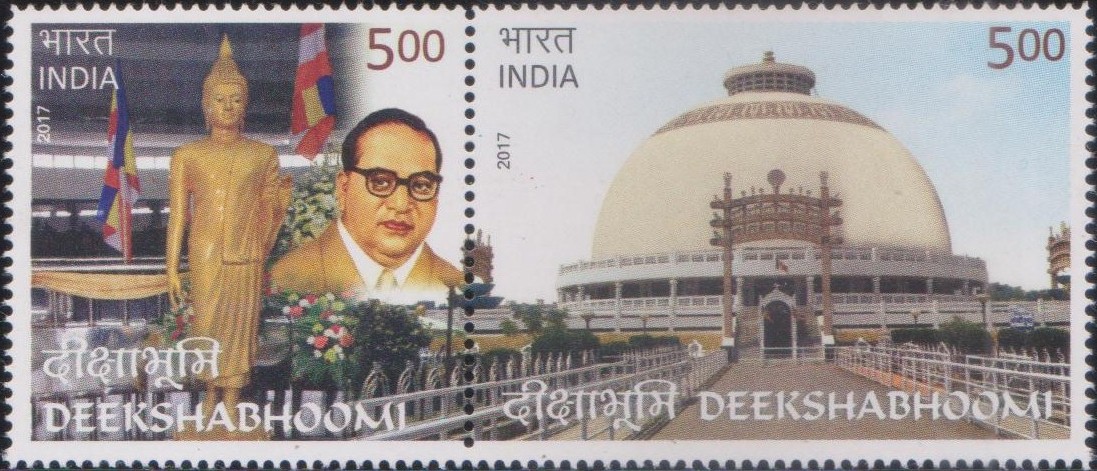
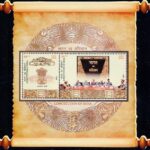
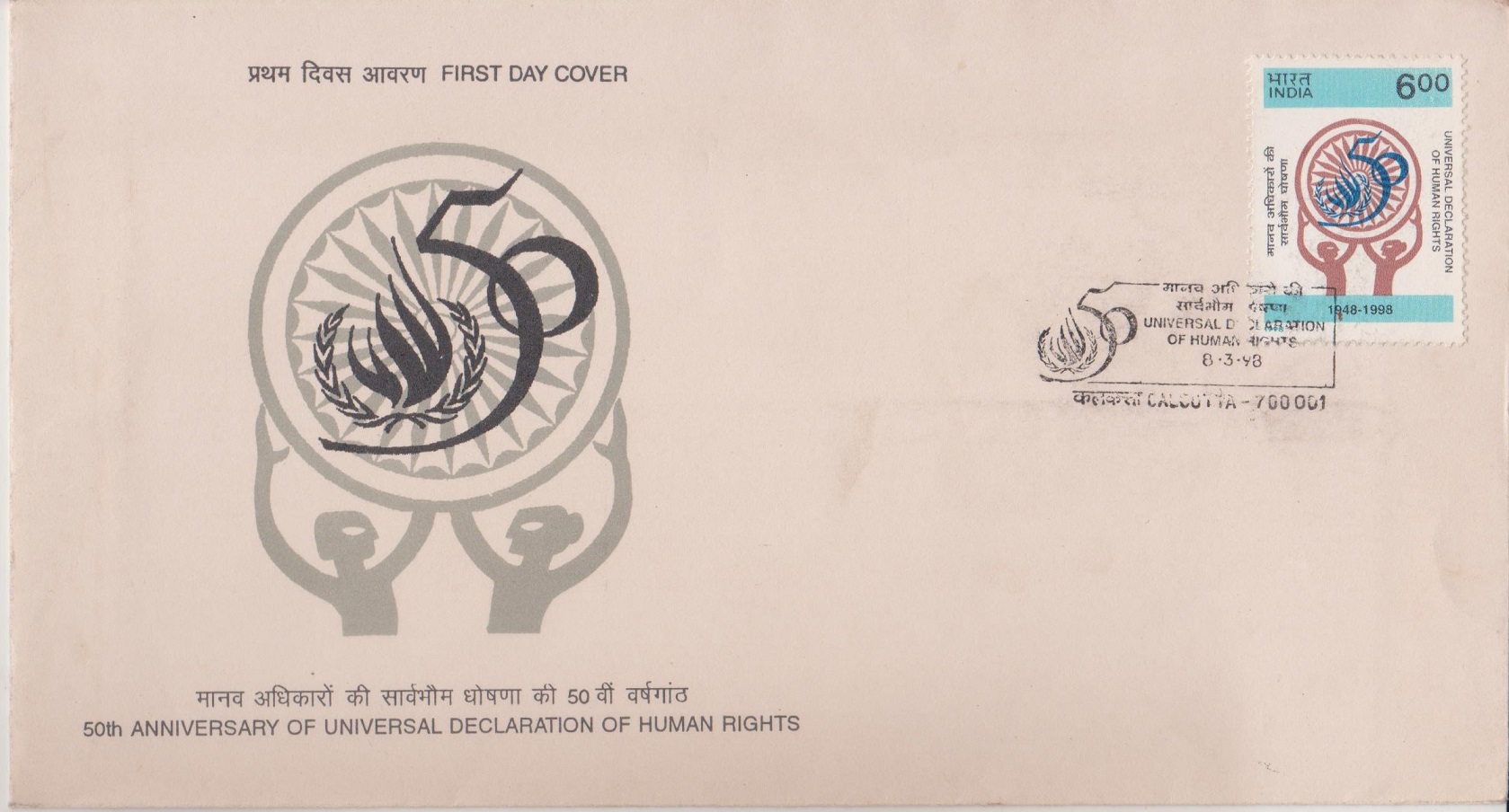
[…] 1927, Dr. Ambedkar led the Mahad March at the Chowdar Tank at Colaba, near Bombay, to give the untouchables the right to draw water from a […]